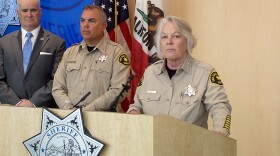Solana Beach has taken the first step toward establishing a community choice aggregation program that would allow it to bypass San Diego Gas & Electric in its energy purchases.
The city is doing a feasibility study to find out whether community choice aggregation would be cheaper than the current SDG&E system, said Solana Beach Mayor Lesa Heebner. The study should be complete in a few months.
What is Community Choice Aggregation?
Right now, San Diego Gas & Electric provides power through its system of lines and wires to every city in San Diego County and southern Orange County. SDG&E buys the electricity from a variety of sources, including natural gas plants, hydroelectric dams and wind turbine farms.
If a city goes with community choice aggregation, power would still go through SDG&E’s grid, but the city would buy the energy, not the utility. That allows cities to have more control over how much of their energy comes from renewable sources.
Community Choice Movement
Other California cities and regional governments are launching community choice aggregation programs or doing feasibility studies. Those include:
"If it’s financially feasible, if it does not put us in any financial liability, if it provides benefits to our residents, then we will take the next step, which is to take it to council," Heebner said.
She said community choice aggregation fits with her city's reputation for making the environment a priority.
"We were the first city to ban single-use plastic bags, and we may be the first to jump on community choice aggregation," Heebner said.
While a report to the Solana Beach City Council in January said the city of about 13,000 people would not have the population to sustain a community choice program on its own, Heebner said the city is working now with a company called California Clean Power on a viable solution.
San Diego also undertook a community choice aggregation feasibility study that was supposed to come out in March.
Cody Hooven, the city's newly hired sustainability manager who oversees the city's Climate Action Plan, said the study is expected "any day now."
The nonprofit Community Choice Partners is doing the study at no cost to the city, Hooven said. She said when it is finished, the city will pay for its own review.
"We don't want to duplicate any work that's been done," Hooven said about why the city is waiting for the nonprofit's work to be completed. "Then our study will fill in the blanks."
Community choice aggregation is an important part of San Diego's Climate Action Plan, said Nicole Capretz, director of the nonprofit Climate Action Campaign that is watchdogging the city's efforts.
Part of the plan calls for San Diego to use 100 percent renewable energy by 2035. Capretz said the city needs community choice to achieve that goal.
SDG&E says 32 percent of its energy is currently from renewable sources. The utility buys electricity from a variety of sources, including natural gas plants, hydroelectric dams and wind turbine farms.
If a city goes with community choice aggregation, its power would still go through SDG&E’s grid, but the city would buy the energy, not the utility. The idea is to give cities more control over where their power comes from, which is essential if cities like San Diego are going to meet their goals of using only renewable energy sources, Capretz said.
"I really hope we can move as a region, because I believe we could achieve greater results and provide greater benefits both in terms of lower rates and more clean energy if we move in one direction toward a 100 percent clean energy goal," she said.
Capretz wrote a draft climate action plan under interim Mayor Todd Gloria that said community choice aggregation would be the only way to get to 100 percent renewable energy. In Mayor Kevin Faulconer's version of the plan, it says “community choice aggregation or another program.”
Faulconer told KPBS in January that his staff will "look at all options" for achieving the renewable energy goal.
"Because that goal is an important one for us to hit and one that I'm committed to," he said. "I think we should rightfully be a nationwide leader when it comes to using clean energy."
Capretz said she's eager to see the feasibility studies' results.
"There's a lot riding on our evaluation and potential adoption of community choice energy in order to hit these legally binding climate goals," she said.






